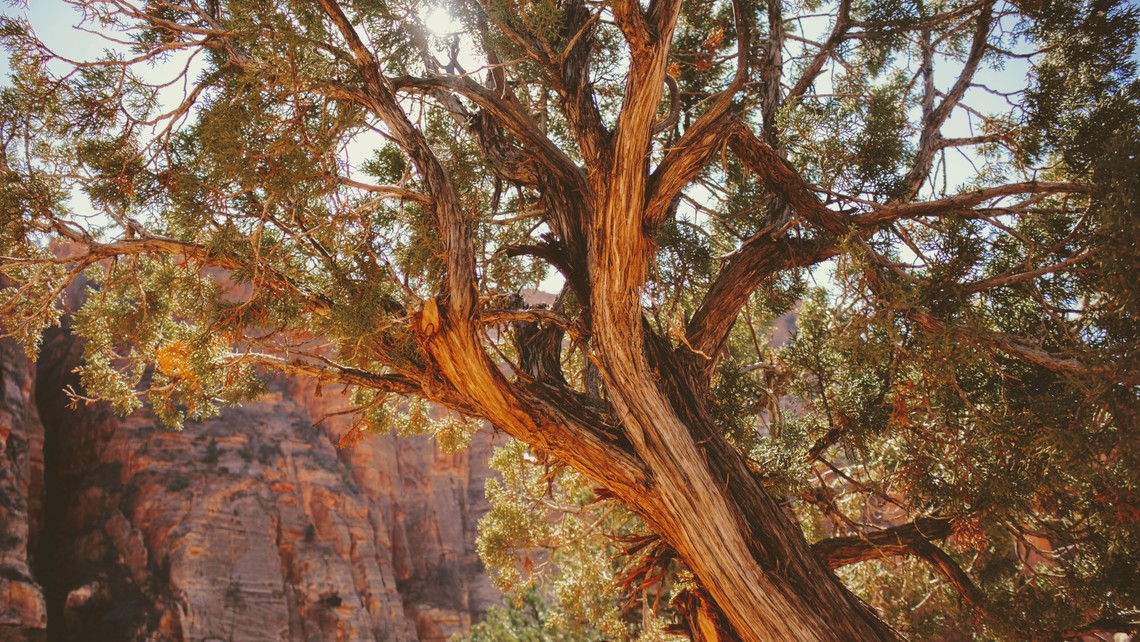
I frequently am hired to help clients approach the development of the raw tract of land they just purchased. Without exception, I encounter surprise and curiosity when I strongly discourage removal of all the cedar (correctly called Ashe Juniper; it is not in the cedrus family). The most common misconceptions I encounter are as follows:
1. Cedar isn’t a native tree, right?
Ashe Juniper is actually a native tree that was found mostly in mountainous rocky areas (hence their common name, Mountain Juniper) and locations where natural fires and fires started by the Native Americans did not often spread to.
2. Cedar is a very invasive tree!
Ashe Juniper is a successful native plant that is unchecked in reproduction when the natural cycle (which includes fire!) is significantly altered by human efforts. The reasoning of this argument would also conclude that Live Oaks are also invasive. Due to the lack of fires and the avoidance of removing any oaks during land clearing, we now have the catastrophic consequence of interconnected roots across the entire Texas Hill Country and the capacity of the oak wilt fungal virus wiping out the vast majority of Live Oak trees. Historically, oak mots were much fewer and mostly separated from one another, preventing the devastation we now experience.
3. Cedar is a water hog and is sucking all the water out of my land.
Ashe Juniper is actually one of the most efficient water users in the entire cadre of native trees in central Texas.
Ashe Juniper is usually the last species to die in a drought. It grows very successfully in places where few other species are able to grow.
It is true they are evergreen, but the amount of water they require per diameter inch is less than a Live Oak. I say this not to advocate for the removal of all Live Oaks by any means, but rather to show that the reasoned conclusion of removal of Live Oaks will also decrease significantly the absorption of water from the ground by a tree species! The fundamental fact behind the shade value of trees to land is this: the Sun, exponentially more than any amount or type of plant, causes the desiccation of the soil. Use of a tensiometer in an Ashe Juniper copse and then outside in a neighboring field will substantiate this.
4. Cedar will turn my land into arid, infertile land.
Ashe Juniper significantly minimizes erosion of topsoil. Watch a slow-motion video of the effects of a full-speed rain drop on soil. By contrast, Ashe Juniper slowly drips the rain onto the ground. It is a fact that the topsoil under a cedar is deeper. Not only that, it is a nutrient-rich humus, the dead needles condition the soil, beneficial bacteria and mycorrhizal fungi populations thrive, and the berries and needles significantly help lower the alkaline soil ph.
5. All cedars around good trees should be removed though, right?
Actually, Ashe Junipers situated around the perimeter of other trees help buffer them from winds, minimize erosion, significantly cool the micro-environment (soil temperature, cambial tissue in trunk, and canopy of tree near Ashe Juniper) around the tree, and reduce the loss of moisture of that tree from the effects of the Sun to its root system outside its own canopy.
Generally, my initial approach to Ashe Juniper removal on raw land is a 60% removal and 40% retention. With time, more removal is often warranted. Obviously, Ashe Juniper in a field for grazing or for growing coastal hay is a negative value. But even for livestock, a mature Ashe Juniper can offer excellent shade. Also, raising the Ashe Juniper canopy to 3' or 4' can allow for grass to grow underneath it. Further, wildlife absolutely need Ashe Juniper as well as highly desirable rare natives such as the Texas Madrone.



